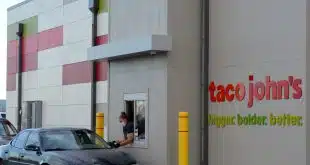Visa USA's increase in credit card interchange rates, announced today, are intended to help the giant bank card network keep its members' business in the face of recent efforts by American Express Co. to court banks as issuers of its cards, Visa says. As expected by many observers, Visa today raised its credit card interchange rate for most merchants and restaurants by just under 8%, from 1.43% of the transaction plus 10 cents to 1.54% plus 10 cents, in line with an increase announced earlier this month by MasterCard. Altogether, Visa changed its rates for eight consumer categories, added rates for four others, and raised rates for four commercial card categories. The new rates take effect April 3, one day later than MasterCard's effective date. Banks collect interchange income from merchant acquirers, which in turn pass on the cost in their pricing to merchants. AmEx recently announced it had signed up MBNA Corp. as its first bank issuer in the U.S., and has been aggressively seeking deals with other major bank card issuers. Visa says its new rates were necessary to meet that competition and match its bank card network rival, MasterCard. AmEx transactions generally carry a merchant fee that is significantly higher than the interchange rates Visa and MasterCard levy. While AmEx will not discuss how it is structuring its bank deals, it is generally believed the T&E giant is willing to share a substantial split with bank partners. Visa feared that without a rate increase it risked losing transaction volume as members signed on with AmEx and steered volume to its network. “AmEx has been approaching Visa members with the primary sell being a higher amount of merchant discount,” says William Sheedy, executive vice president for bank card research and interchange strategy at Visa. “We would have been competitively disadvantaged with respect to (members') brand decisions (without a rate increase).” At the same time, Sheedy points out the higher Visa rates help members support rewards cards and services for so-called transactors?usually higher-income cardholders who spend more but do not revolve balances. Both efforts are expensive, since competition has driven up the cost of rewards and incentives and transactors don't pay finance charges, yet both are necessary to drive volume to merchants and compete with AmEx, says Sheedy. “Where you're seeing most of the competitive action from AmEx is in the rewards category, where their cost of rewards is funded by their merchant discount,” he says. Although merchants like Wal-Mart Stores Inc. have been vocal in their displeasure regarding bank card fees, Sheedy argues Visa's latest move is “good for the merchant community,” since it allows Visa to compete more effectively with AmEx. “If Visa didn't play in this space, AmEx would see greater levels of growth at the end of the day and that would be a greater expense to the merchant,” he says. Sheedy denies the latest rate increase in credit card rates represents an effort by Visa to allow its members to recoup income lost through successive reductions Visa has made in rates on its signature-based debit product. Both bank card networks slashed their debit rates by about one-third last summer in response to a settlement of the massive Wal-Mart case, and both followed up with further reductions announced in December. Though many observers have argued these reductions have led members to pressure the associations to raise credit card rates, Sheedy insists there's “no substance in that,” arguing changes in the interchange schedules for each product are not connected but rather occur in response to the dynamics of each market. Under Visa's new rate schedule, supermarkets and general retailers are grouped into three categories depending on volume, as is the case with Visa's debit card pricing. All three volume tiers carry maximum allowable chargeback and fraud ratios of 0.039% and 0.057% respectively. The very largest retailers, those with annual volume of $2 billion or more, will see their rate increase from 1.39% plus a dime to 1.43% plus a dime. The rate for the smallest?those under $300 million in volume?will pay 1.54% plus 10 cents, up from 1.43% plus 10 cents. That means a $90 charge will cost $1.49, 10 cents more than before April 3. The very largest supermarkets will actually see lower costs on higher-value transactions, as their rate goes from a flat 1.20% to 1.15% plus a nickel. The rate for the smallest supermarkets rises from 1.20% plus 5 cents to 1.24% plus 5 cents. The rate for restaurants also rises from 1.43% and a dime to 1.54% plus 10 cents. The rates for mail order/phone order, basic Web transactions, Web transactions performed with Verified by Visa, and gas stations remain unchanged.
Check Also
Eye on Restaurants: Tech Consolidation’s Importance Grows; Meal Ticket’s New Network
As point-of-sale systems, marketing platforms, and inventory management all find their way to small and …




